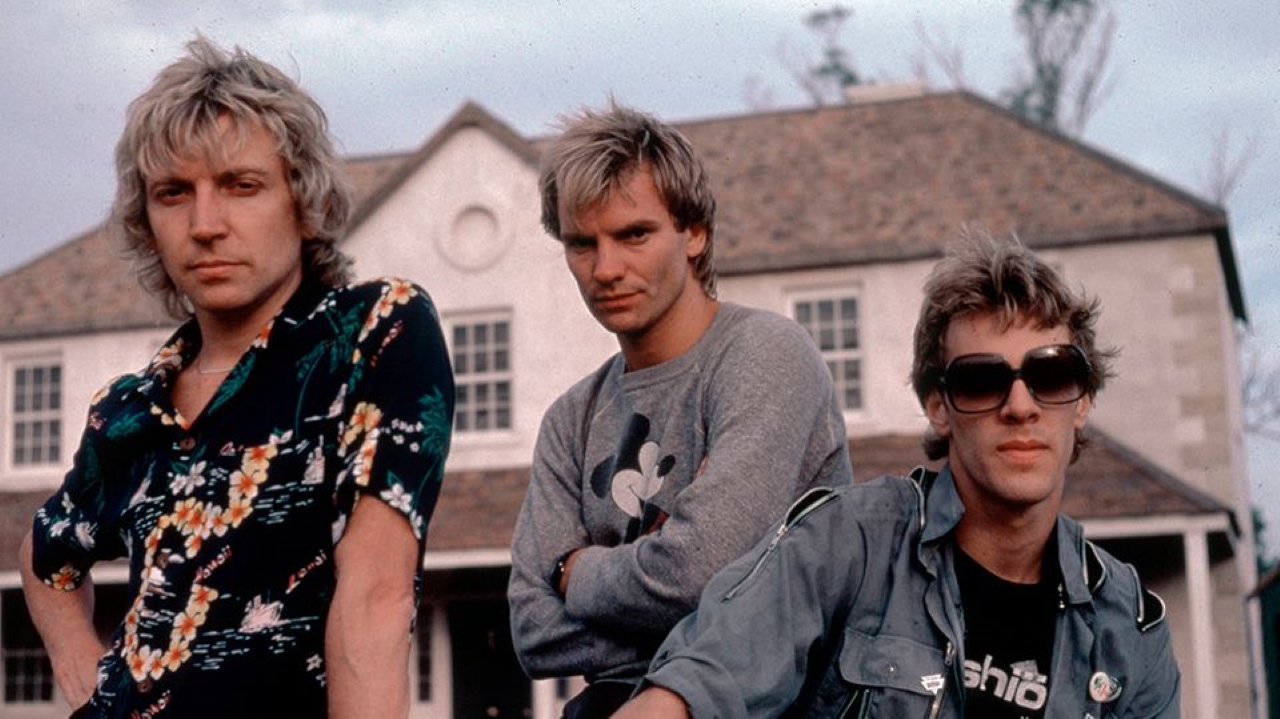⭐ The Beginning of a Signal
In September 1979, The Police—still a young band with punk-styled blond hair, leather jackets, and raw attitude—achieved what had once seemed impossible. Their single “Message in a Bottle” shot straight to No.1 on the UK Singles Chart, marking the band’s very first chart-topping hit. For Sting, Andy Summers, and Stewart Copeland, it was a watershed moment: the scrappy trio who had been hustling in pubs and small clubs only two years earlier were suddenly recognized as a defining force in British rock.
The track anchored their second album, Reggatta de Blanc, a record that fused punk urgency with reggae rhythms and pop sensibility. With “Message in a Bottle,” The Police proved they weren’t just another product of the post-punk wave—they were carving out a sound that was distinctly their own, one that would influence the next decade of rock music.

⭐ A Message of Loneliness
Lyrically, the song is both poetic and devastating. It tells the story of a castaway who, stranded in isolation, sends a desperate SOS in a bottle across the ocean, hoping to find a connection. After a year passes with no reply, the narrator suddenly discovers “a hundred billion bottles washed up on the shore”—a revelation that his loneliness is universal.
The central metaphor captured the zeitgeist of the late 1970s: urban alienation, emotional disconnection, and the search for meaning in an increasingly fractured world. For Sting, who wrote the song while grappling with his own sense of estrangement, it was a deeply personal reflection. Lines like “Seems I’m not alone at being alone” resonated with millions, transforming a simple pop hook into an anthem of shared human solitude.
⭐ The Sound That Broke the Mold
Musically, “Message in a Bottle” was a masterclass in contrast. Built around Summers’ chiming, delay-soaked guitar riff—one of the most recognizable in rock history—the track layered reggae-infused rhythms with punk energy. Copeland’s drumming, full of syncopation and precision, gave the song its heartbeat, while Sting’s urgent bassline and soaring vocals added both groove and emotional weight.
This hybrid sound was what set The Police apart. They weren’t as abrasive as the punk bands, nor as polished as the pop acts dominating radio. Instead, they occupied a strange and thrilling middle ground—restless, experimental, but still irresistibly catchy. The result was a track that appealed equally to critics, punks, and mainstream listeners.
⭐ Chart Victory and Critical Acclaim
When “Message in a Bottle” climbed to No.1 in September 1979, it wasn’t just a triumph for The Police—it was a turning point for British rock. It signaled that music infused with reggae grooves and thoughtful lyrics could find mass appeal, even in a market still buzzing with punk nihilism and disco fever.
Critics praised the track for its innovation. NME hailed it as “the most compelling single of the year,” while others noted the band’s ability to balance commercial success with artistic edge. For The Police themselves, the hit was validation that their experiment in blending genres wasn’t just sustainable—it was revolutionary.
⭐ From Struggling Band to Global Force
Before “Message in a Bottle,” The Police had tasted moderate success with “Roxanne” and “Can’t Stand Losing You,” but they were still viewed by many as outsiders. Their image—a trio of peroxide-blond musicians—had even led some critics to dismiss them as a manufactured gimmick.
The success of “Message in a Bottle” silenced those doubts. It placed them at the top of the UK charts and set the stage for a career that would soon dominate the world. By the early 1980s, The Police would become one of the biggest bands on the planet, headlining stadiums and influencing countless musicians. And it all started with a lonely SOS floating on an imaginary sea.
⭐ Legacy of the Bottle
Decades later, “Message in a Bottle” still resonates. It remains a staple of The Police’s catalog and a fan favorite at live shows, with its guitar riff instantly recognizable within seconds. Beyond its musical brilliance, the song endures because its core theme—loneliness and the universal search for connection—is timeless.
From cover versions to cultural references, the song has never faded. Even younger generations, far removed from the punk and reggae scene of the late ’70s, continue to find meaning in its message. That’s the power of music that dares to be both personal and universal at the same time.
⭐ Conclusion – A Signal Received
“Message in a Bottle” was more than The Police’s first No.1 single—it was their declaration to the world. It carried a simple but profound truth: that in our solitude, we are united. For Sting, Summers, and Copeland, it was the song that proved their voice mattered, a signal sent out into the cultural ocean—and one that, forty-five years later, is still being heard.